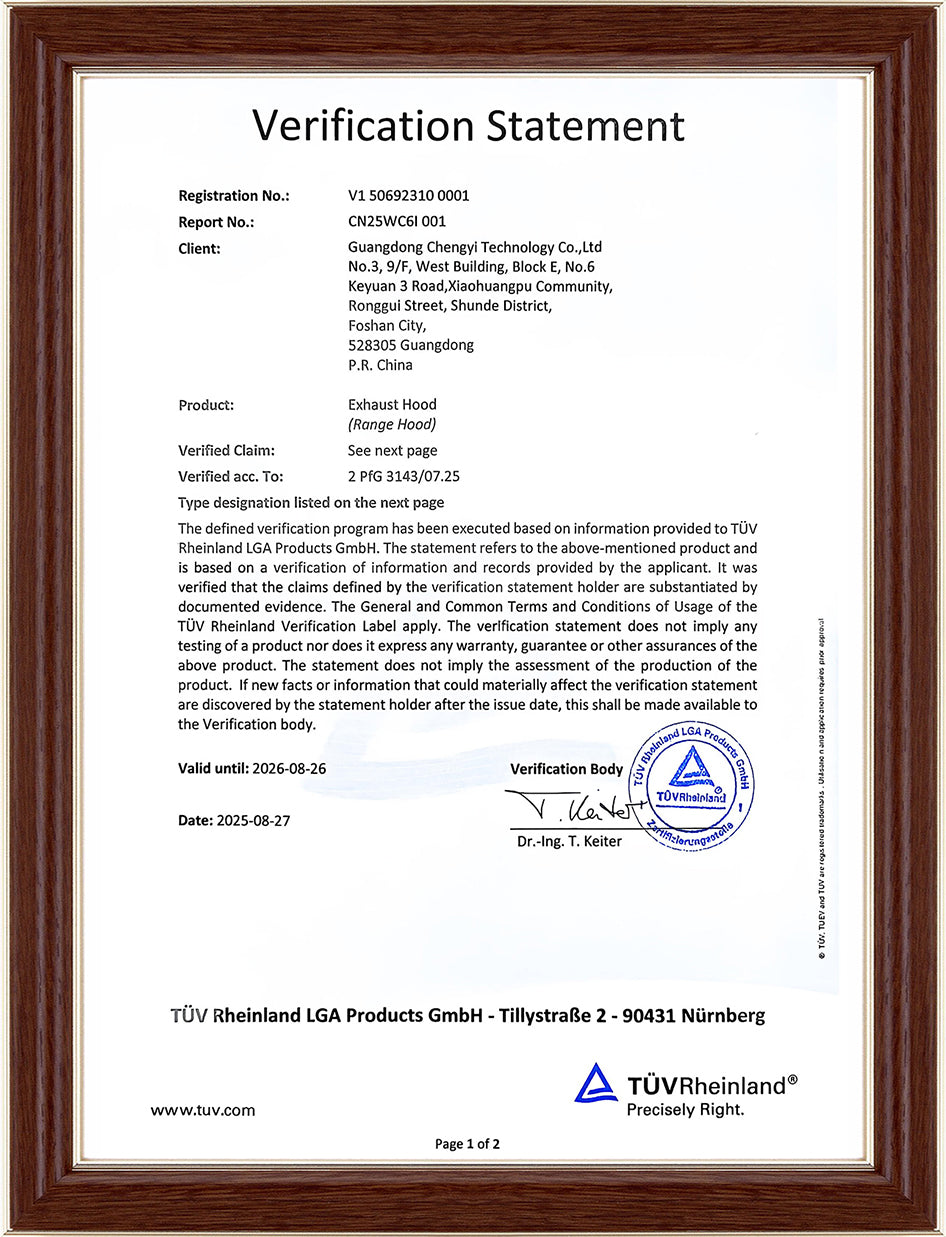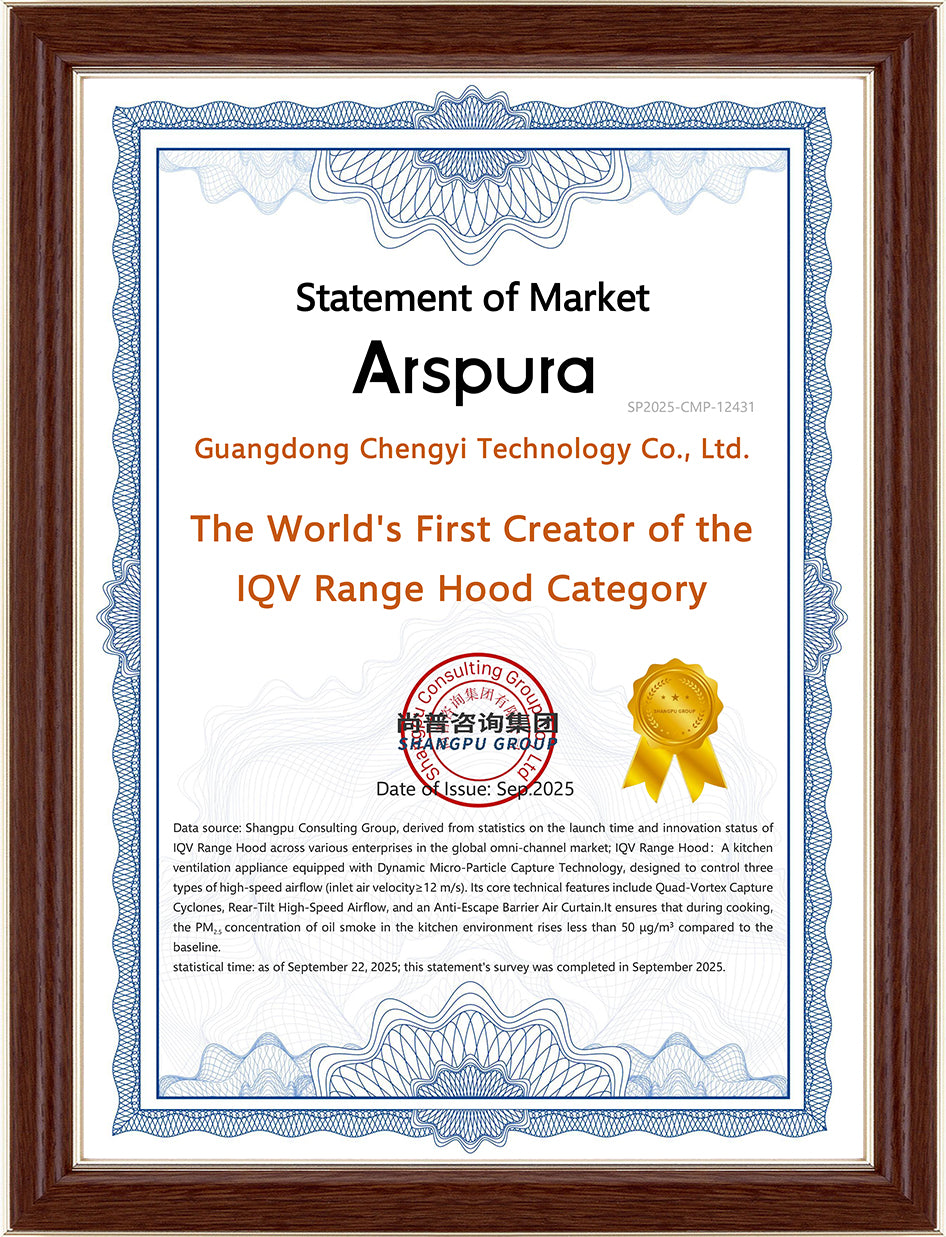Engineered for Pure Air — Powered by IQV

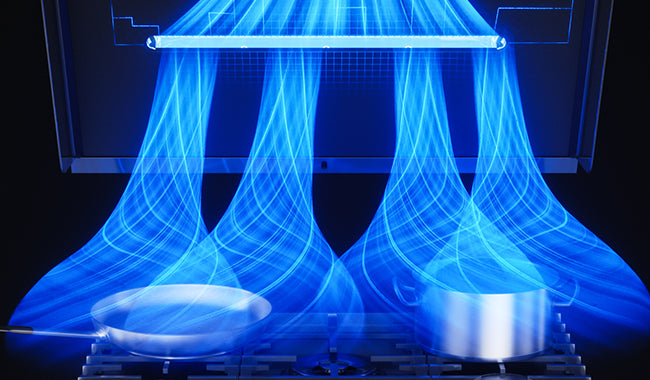
IQV (Inclined Quad-Vortex) technology was initially developed for industrial environments to protect operators from harmful toxic gases. It is based on cutting-edge theoretical research in fluid mechanics and combustion aerodynamics and has now been applied to high-performance kitchen ventilation. By integrating high-speed airflow, counter-rotating cyclones, and anti-leakage air curtains, IQV effectively prevents smoke and fine particulate pollutants (like PM2.5) from escaping. Leveraging decades of research in airflow and particle dynamics, IQV is the next generation of efficient, powerful, and clean ventilation solutions.
Innovations.
Performance driven technology
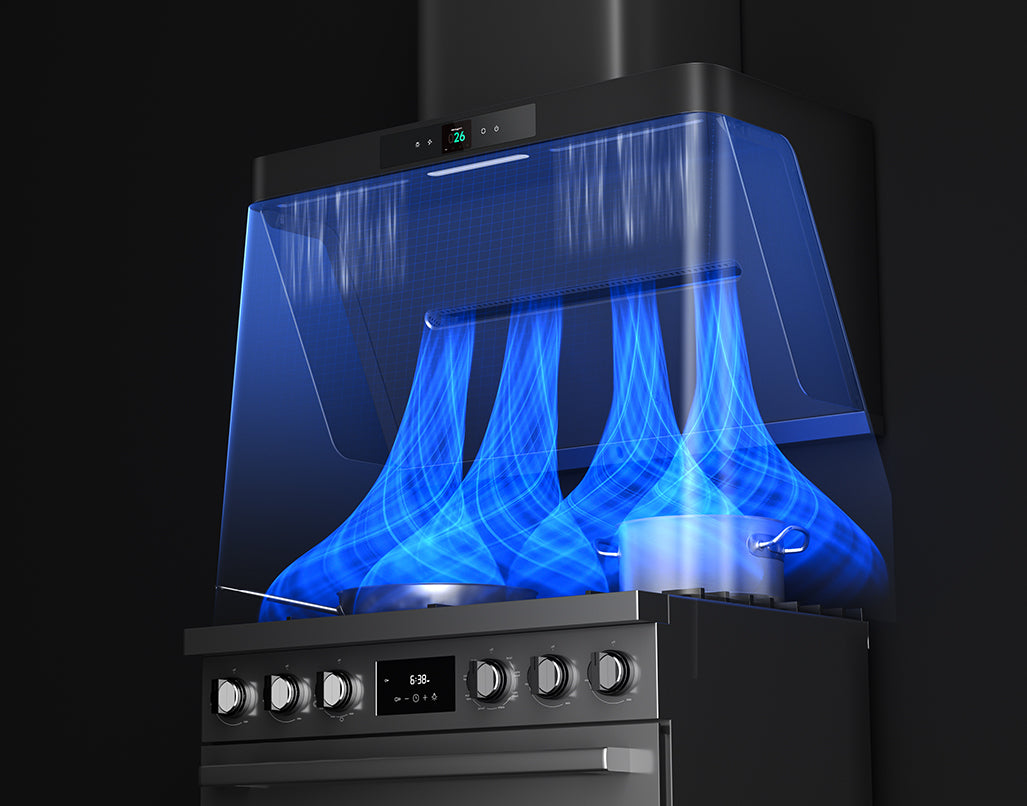
WHAT IS IQV?
IQV Technology utilizes a sophisticated airflow system featuring four inclined vortices that work in harmony to extract cooking fumes and pollutants at an unprecedented rate. Unlike traditional range hoods, which rely on passive suction, IQV generates a wind speed of up to 13 m/s, significantly outperforming conventional systems that typically operate at speeds of just 2.4 m/s. The system uses aerodynamic principles to optimize airflow, directing smoke and oil fumes directly into the ventilation system without allowing them to escape into the kitchen air.
Why IQV Technology Leads the Future of Kitchen Ventilation
IQV™ (Inclined Quad-Vortex) technology revolutionizes kitchen ventilation with industrial-grade aerodynamic design adapted for home cooking. By generating four inclined vortex streams, it captures smoke and PM2.5 instantly—preventing diffusion and protecting indoor air quality.
Explore the Science Behind Clean Air
Working Principle of IQV
Patented IQV airflow forms four converging vortices to trap smoke, odor, and grease right at the stovetop, keeping your kitchen air clean and clear.
CFM ≠ Suction Power
High CFM isn’t everything — 13 m/s high-speed suction captures fumes instantly, removing smoke faster and deeper than traditional range hoods.
Danger of PM2.5
Cooking fumes carry PM2.5 and harmful particles. Arspura’s purification system and sensor monitoring ensure healthier air for your family every day.
How IQV Captures Smoke Before It Spreads
IQV Technology uses high-speed, targeted airflow to capture smoke and odors instantly—keeping your kitchen air fresh and pure.
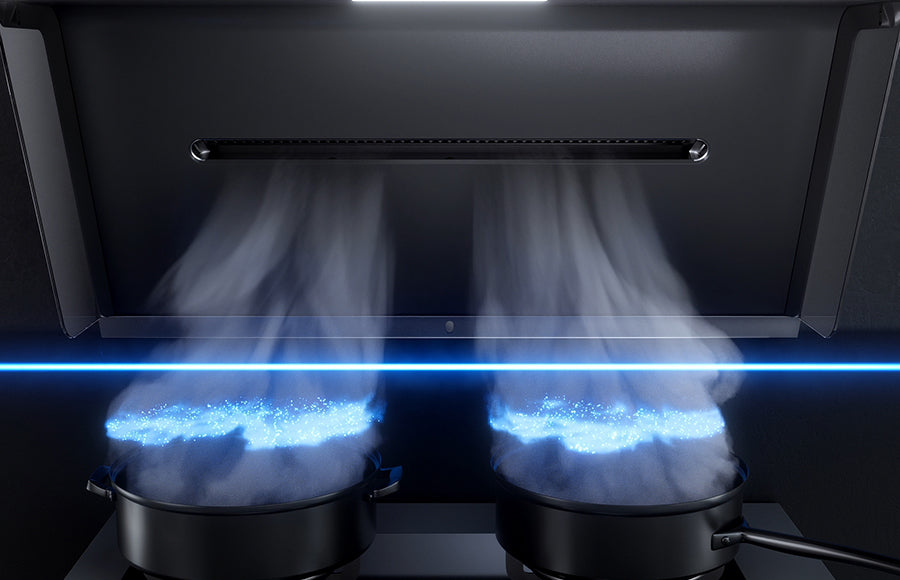
What Is Multiple Airflow



Our brand-exclusive IQV™ system integrates three advanced airflow mechanisms into one unified range hood solution. This multi-flow architecture elevates capture efficiency, suppresses disturbance-driven leakage, and delivers a cleaner kitchen environment for high-end cooking lifestyles.
- Inclined High-Speed Airflow
The first airflow module is designed with a precise inclination and high velocity of approximately 13-18 m/s. This angled jet is directed towards the rear wall behind the cooktop, rather than straight upward or toward the user. By doing so it mitigates the “wake effect” where body movement or utensil handling disturbs the airflow path.
In fluid dynamics terms, the inclined high-speed jet entrains cooking fumes and drives them away from the operator zone, enhancing capture momentum and ensuring that smoke and fine particles are immediately drawn into the hood’s intake region.
- Quad-Vortex Capture Flow
Above the cooking surface we deploy two pairs of rotating vortex airflows—hence “Quad-Vortex”. This generates a robust suction field directly at the fume generation point. The vortex flows trap and channel airborne particles and volatile compounds at the moment they are produced, minimizing their chance to spread or escape.
By focusing on source-capture, this vortex module effectively controls PM2.5 and other fine particulates that typical single-direction hoods often fail to contain.
- Push-Pull Containment Flow
To address cross-contamination of air and turbulent conditions in the kitchen (such as vigorous stir-frying, opening cabinet doors, or changes in air pressure), we adopted a push-pull airflow system. A “push” flow introduces fresh air into the capture zone while a “pull” flow extracts the polluted air. Together they form an airflow barrier that isolates the fume zone from the surrounding clean air volume.
This containment layer enhances disturbance resistance and secures the boundary between polluted air and the ambient kitchen environment.
Benefits of Multiple Airflow
-
Industry-First Innovation
Conventional range hoods typically rely on a single airflow direction. IQV™ marks the first integration of multi-flow technology in a residential range hood application.
-
Faster Fumes Extraction
The multi-mechanism airflow path dramatically reduces the time from fume generation to evacuation.
-
Superior Containment
Fine particulates (including PM2.5) and cooking odours are captured and sealed, not merely diluted.
-
High Disturbance Resistance
The system maintains performance even during vigorous cooking styles or dynamic kitchen airflow conditions.
Certified Innovation. Proven Safety.
FAQ
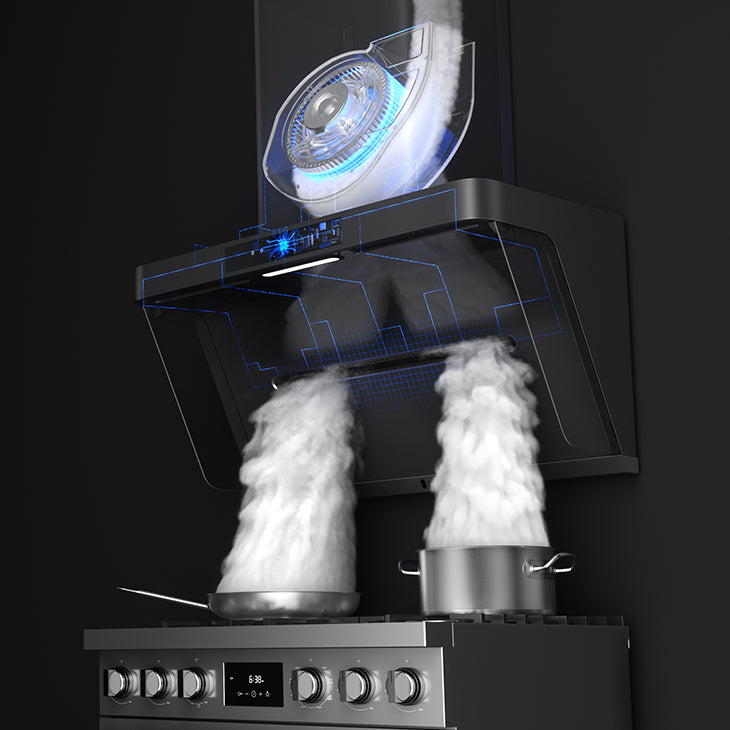
What Makes IQV Technology Unique in the Arspura Range Hood?
IQV technology uses advanced vortex action with high-speed airflow and counter-rotating cyclones to efficiently capture smoke and pollutants, offering superior performance compared to traditional range hoods.
Why Is IQV™ Technology Different From Other Ventilation Systems?
IQV™ technology creates a powerful vortex effect with counter-rotating airflow, trapping grease and fumes before they spread. This unique approach provides faster, more efficient smoke capture than traditional range hoods, especially during high-heat cooking.
What Is the Use of Glass Baffles?
The glass baffles create a “smoke-locking” barrier on either side of the hood, containing smoke and ensuring it is captured and directed towards the air intake.
Can IQV Technology Reduce Kitchen Odors?
Yes, IQV efficiently removes smoke and cooking odors, ensuring that your kitchen remains odor-free during and after cooking.
How Does the Arspura Ensure Efficient Smoke and PM2.5 Removal?
Powered by IQV technology, the Arspura Hood uses dynamic particle capture to instantly eliminate oil fumes and PM2.5. Its advanced aerodynamics create high-speed suction and dual air curtains, minimizing smoke escape for a cleaner kitchen environment.
Why Is High Air Speed Better Than High CFM for Removing Grease and Fumes?
CFM measures the amount of air flow, while air speed determines how quickly and effectively the fumes are captured at the source. A high air speed creates a strong suction right above the cooktop, preventing the spread of grease and smoke. Without adequate air speed, even a high CFM range hood may allow fumes to escape. In short, the key to clean air is air speed, not just CFM.
What Is CFM, And How Much Do I Need?
CFM (Cubic Feet per Minute) measures how much air a range hood can move per minute. A common rule of thumb is to have 100 CFM for every 10,000 BTUs of your gas stove. To calculate: total your stove’s BTUs and divide by 100.
Example: A stove with 40,000 BTUs needs at least 400 CFM.
However, higher CFM doesn't always mean better performance. There’s no global standard for measuring CFM, and results can vary depending on the kitchen layout, venting setup, open windows, and even testing conditions. In fact, changing just one element, such as closing a window, can also affect CFM readings.
That’s why we recommend choosing the Arspura, which prioritizes high air speed and smart airflow design over raw CFM numbers to ensure effective smoke and grease capture.


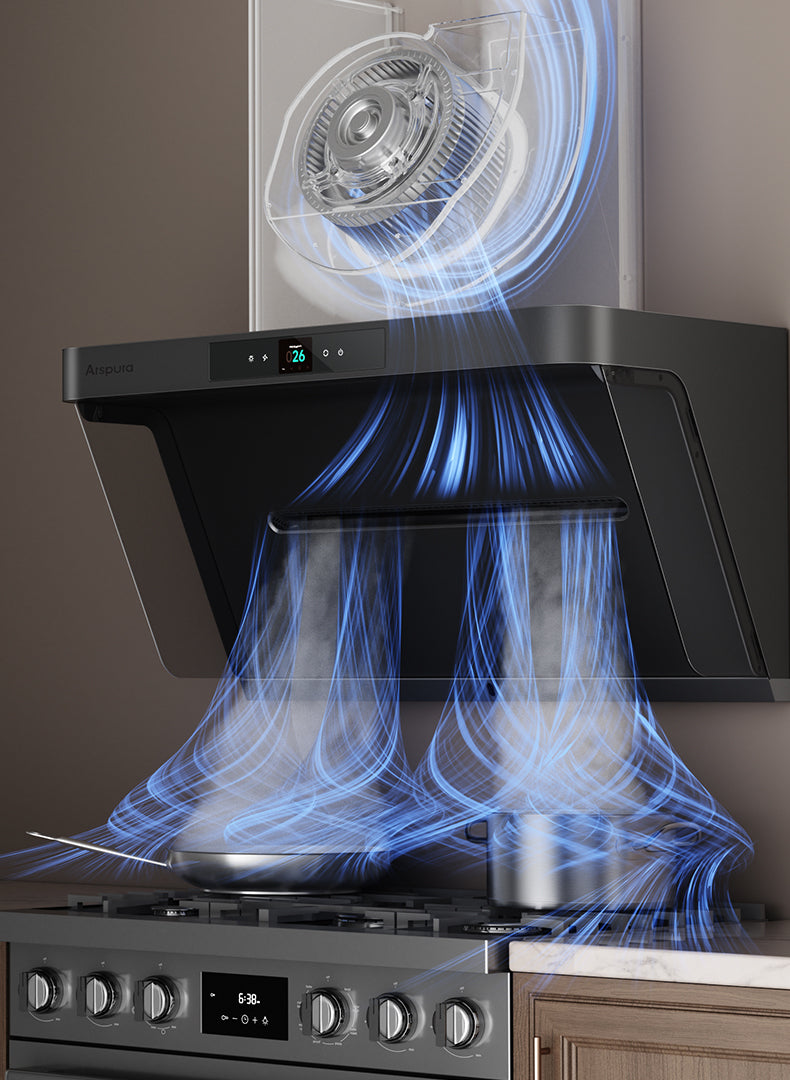
 Jet-Speed Smoke Capture
Jet-Speed Smoke Capture
 Total Smoke Containment
Total Smoke Containment
 Pure Air Protection
Pure Air Protection
 Whisper-Quiet Performance
Whisper-Quiet Performance
 Smart Energy Flow
Smart Energy Flow


